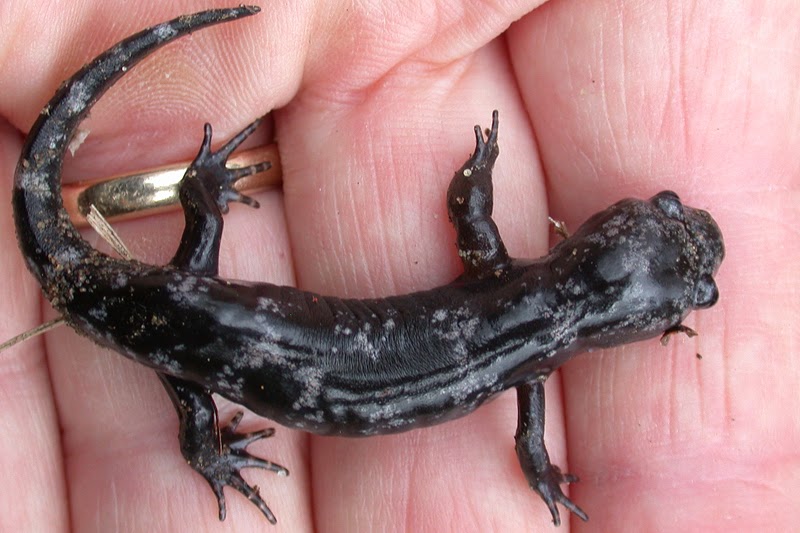CMBO is
pleased to provide weekly summaries of the Cape's birding highlights. Coverage
is limited to bird sightings in Cape May County. Readers should keep in mind
that some reports may not be confirmed. The vast majority of information
utilized in these reports comes from eBird data and "Keekeekerr" text
alerts. Observers are also encouraged to
send reports and photos to compiler Tom Reed (coturnicops at gmail dot com).
Location Abbreviations/Explanations: CMP (town of Cape May Point); CMPSP (Cape May Point State Park); WMA (Wildlife Management Area).
Access Note: Stone Harbor Point is open to public access again.
--===============--
Waterbird migration continued to slowly pick up the pace in recent days. Westerly winds produced small movements of Snow Geese and Canada Geese 21–22 Mar (m. ob.). At least 9 Snow Geese lingered at Reed's Beach through 27 Mar (TR). More notable lingerers included 5 Redheads at Cox Hall Creek WMA and 2 Canvasbacks at CMPSP through the period (m. ob.), along with 2 Tundra Swans still present at CMPSP 27 Mar (m. ob.). A strong total of 190+ Wood Ducks moved north past CMP 27 Mar (m. ob.). The second half of March can be a good time to find northbound Eurasian Wigeon; a drake played hide-and-seek with birders at CMPSP 21–23 Mar (m. ob.). Wild Turkey became much more conspicuous in recent days. Notably, at least 6 were seen on several days around residential CMP (m. ob.). The year's first Snowy Egrets flew past CMP 27 Mar (TR et al.). A Northern Goshawk, perhaps the same individual seen earlier in the month, cruised past CMP 26 Mar (CB, TR). A migrating Golden Eagle made for a surprising sight over Stone Harbor Boulevard 24 Mar (WK). Osprey continued to arrive, with an influx of active migrants 23 Mar (m. ob.).
 |
| [Migrating Common Loons started to appear at CMP 22 Mar. Photo by Tom Reed.] |
SHOREBIRDS THROUGH BLACKBIRD
Migrant shorebirds played a more prominent role this week. Piping Plovers continued to filter in, with a recent max of 15 at 111th Street, Stone Harbor 23 Mar (TR). Killdeer have been noted on a daily basis, with small flocks regularly passing north over Cape Island. Both Greater and Lesser Yellowlegs arrived at several sites throughout the peninsula, and Wilson's Snipe have become a more regular sight at Cape Island-- a flock of 10 flew over WCM 27 Mar (MO). Reports of alcids have been few since early-Feb; a single Razorbill flew south past CMP 21 Mar (TR). At least 2 Black-headed Gulls remained along the lower bayshore, with recent reports from Miami Ave, Villas (m. ob.). CMP's Eurasian Collared-Dove was most recently seen at the entrance to CMPSP 26 Mar (m. ob.). Rare as a spring migrant, a Lapland Longspur put in a brief appearance over CMP 22 Mar (TR). The first obvious wave of landbird migrants occurred 26–27 Mar, and included widespread reports of Tree Swallow, Eastern Phoebe, Northern Flicker, Pine Warbler, and various sparrows. A remarkable fallout of Pine Warblers 26 Mar involved 120+ at Cape Island, with 100+ at CMP (m. ob.). Another 30+ were tallied at CMP 27 Mar (TR et al.). The year's first Yellow-throated Warbler was encountered at the South Cape May Meadows 26 Mar (KH). Notable Rusty Blackbird totals included 26 at the Rea Farm/Beanery 22 Mar (CB, TR) and 36 at Higbee Beach WMA 26 Mar (DF).
 |
| [Piping Plover at Two Mile Beach, 23 Mar. Photo by Tom Reed.] |
--===============--
Contributors:
Catherine Busch (CB), Don Freiday (DF), Kathy Horn (KH), Will Kerling (WK), Michael O'Brien (MO), Tom Reed (TR).
----
References:
eBird. 2012. eBird: An online database of bird distribution and abundance [web application]. eBird, Cornell Lab of Ornithology, Ithaca, New York. Available: http://www.ebird.org. (Accessed: 27 March 2015).
Fogg, B. 2013. Keekeekerr: Recent Text Alerts. Available: http://keekeekerr.com/textalerts/keekeekerr. (Accessed: 27 March 2015).


























